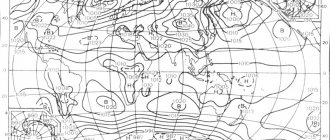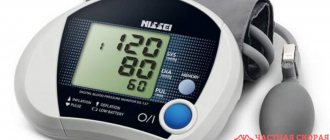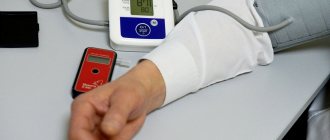Record high atmospheric pressure has set in Moscow. For weather-sensitive people, such weather can result in dizziness and even loss of consciousness. Giving up bad habits and high physical activity will help alleviate the condition.
A record atmospheric pressure was set in Moscow. The night before it rose to 766 millimeters of mercury, which is 18–20 units above normal. Prior to this, the maximum value was recorded in 2010 - 763.2 millimeters.
The weather hasn't set such records yet. In Moscow on Tuesday they promised +9...+11 degrees and cloudy weather without precipitation, and in the Moscow region - +7...+12 degrees.
Leading employee Evgeny Tishkovets said that atmospheric pressure will peak on October 6-7, RIA Novosti wrote.
Preparing for weather records
Sudden changes in temperature and atmospheric pressure will negatively affect the human body. Doctor of Medical Sciences, Professor of the Department of Gerontology and Geriatrics of the FPDO MGMSU Yuri Konev reminded “360” that, first of all, weather-sensitive people suffer from record indicators and react to both high and low blood pressure.
The reaction may be the same. First of all, it is a headache, dizziness, blood pressure can rise and fall. This depends on the person’s blood vessels, which may react differently. <…> With such symptoms, a person may lose balance and even consciousness
Yuri Konev.
During such periods, people of the older age group are at risk. Konev explained this by saying that weather sensitivity increases over the years. Pressure changes will also affect people with unstable blood pressure, hypertensive and hypotensive patients, therapist Natalya Urazova told 360.
But you can prepare your body for sudden changes in pressure. According to Konev, weather-sensitive people can consult with a doctor and adjust the drug therapy they take to cope with weather events and reduce the risk of adverse events.
“Of course, we need to adjust the work and rest schedule, slightly reduce both physical and emotional stress. Get enough sleep, stay hydrated,” the doctor added.
During such periods of record atmospheric pressure, you should definitely abstain from alcohol. This is because the vascular response to alcohol can be unpredictable. According to Natalya Urazova, other habits will have to change.
“During such a period, you need to lead a healthy lifestyle, stop smoking and foods with salt, and also eat right,” the therapist added.
Normal atmospheric pressure
Normal pressure is 760 mmHg. Art. At the same time, people feel comfortable or feel good.
The pressure is unstable and fluctuates daily. However, the body is able to calmly withstand a wide range of values. Thus, in Mexico City the average value is no more than 570 mm Hg. Art. (due to being at a significant altitude).
The changes are not felt by people. Let’s say that at night the mercury rises by 1-2 units. Jumps of 5-10 or more points can cause painful sensations, and sudden strong fluctuations can even lead to death. For example, loss of consciousness occurs when the pressure drops by 30 points, i.e. at an altitude of 1000 meters.
A continent or a specific country can be divided into zones with different rates of indicator. The optimal value is determined by the area of permanent residence. The human body is capable of adapting to unusual natural conditions.
Banal acclimatization at resorts serves as an example of this. Sometimes a person is unable to change his mind. Thus, those living in the mountains experience poor health in lowland areas, no matter how long they live there.
Thus, the value of the standard pressure is clearly established. And comfortable meaning has a wide range. It is individual and determined by the familiar environment. With prolonged acclimatization, the negative effects are minimized.
Should we expect improvements?
An anticyclone caused record atmospheric pressure and cool weather. The chief specialist of the Moscow Meteorological Bureau, meteorologist Tatyana Pozdnyakova told “360” that it formed over the north of Scandinavia.
“This is not a warm Azov anticyclone. This is cold air, which is always heavy. That is why this anticyclone develops and is replenished with portions of even colder air, as there is a flow from the Arctic. Therefore, atmospheric pressure has remained at record levels since Sunday,” Pozdnyakova said.
As a rule, in a winter anticyclone, cold air is formed in the lower layers of the atmosphere, and at the top it is warm. According to Pozdnyakova, the current anticyclone is high, the thickness of cold air exceeds five kilometers. This factor also affects blood pressure.
High atmospheric pressure will accompany Muscovites at least until the end of the week. Afterwards it will gradually begin to go east.
“It is possible that one will be replaced by another. A front with a small amount of precipitation will slip between them, and then the next anticyclone will form. Perhaps it will also have high atmospheric pressure, but it will not be record-breaking,” the meteorologist concluded.
What is atmospheric pressure and how is it measured?
The definition of atmospheric (barometric) pressure is the pressure of air on objects present in it and on the surface. It is measured with barometers or thermohygrometers.
The following units are used:
- bars (1 Ba = 100 thousand Pa);
- Pascals (kPa, hPa, mPa);
- mmHg (1 mmHg = 133.3 Pa);
- atmosphere (1 at = 98066 Pa);
- kg force per cm2 (1 kgf/cm2 = 98066 Pa).
Assuming air temperature remains constant, pressure decreases exponentially as it rises. For altitudes up to approximately 100 km it is calculated by the formula:
Where:
ph—pressure at a certain altitude, Pa;
p0—surface pressure, Pa;
ρ0 is the density of air masses at zero altitude;
h—height, m;
g is a constant equal to 9.80665;
e is the base of the natural logarithm, a constant equal to 2.71828.
Other reasons
Other reasons that lead to high blood pressure in a person include taking pharmaceutical drugs. These could be antidepressants, glucocorticosteroids and even oral contraceptives.
Taking cocaine leads to increased blood pressure. Pressure surges are often observed during severe pregnancy, especially in the presence of toxicosis.
Diseases of the nervous system can also cause increased blood pressure, in particular Guillain-Barré syndrome, intracranial hypertension, encephalitis or malignant neoplasms in the brain.
Causes of increased blood pressure
It is believed that primary hypertension develops due to impaired arterial tone, which leads to an increase in blood pressure. And the tone of the arteries can change from external factors, such as:
- irritability, and as a consequence the production of excess stress hormones;
- lack of physical activity;
- abuse of salt and alcohol;
- smoking;
- age-related changes.
What device is used to record pressure?
To monitor the blood pressure, a tonometer is used. There are automatic and semi-automatic devices. There are also mechanical ones. They use a rubber bulb. Despite the widespread use of automatic and semi-automatic tonometers, doctors resort to mechanical analogues, as they allow them to obtain the most accurate information. This involves using a phonendoscope to listen to the contraction of the arteries.
Which blood pressure monitor should you buy? This will depend on the frequency of use. If you plan to use the device infrequently, you can select the automatic (semi-automatic option). This device has the option of saving measurements, a timer, a convenient display showing indicators, a calendar and various technologies. However, it will have to be calibrated regularly, batteries will need to be changed, and the service life is relatively short. If you need to use a tonometer every day, it is better to purchase a mechanical analogue. Of course, it is not so comfortable, but it is practical. There are enough manufacturers on the market producing various tonometers. Among them are Rossmax, A&D, Microlife, Omron. Many semi-automatic and automatic models are reliable, although quite expensive. However, they can help to correctly interpret the indicators and even prevent dangerous consequences.
What is blood pressure
Blood pressure reflects the force of blood moving through the vessels. There are two types:
- systolic, that is, a recorded pressure indicator at the moment when the heart muscle contracts;
- diastolic, the level of pressure at the moment of relaxation.
Each indicator has its own norms, but diastolic should always be less than systolic.
Risk factors
Despite the rapid development of medicine, the real causes of hypertension have not yet been clarified. However, a clear connection has been established and risk factors that lead to the development of the disease have been identified:
- genetic predisposition;
- development of the baby in the neonatal period (a child born with a low body weight is more susceptible to developing hypertension);
- overweight (even an extra 10 kilograms increases blood pressure by 5 points);
- polluted environment, increased noise levels, constant stress.
In adolescence, it is considered normal if there are pressure surges. This is due to hormonal changes in the body. Maximum surges occur at the age of 15, but at 20 everything should stop.
Secondary causes
The condition in which a person has the highest blood pressure is also facilitated by so-called secondary factors and they are mainly associated with pathologies of internal organs, in particular with those involved in the blood circulation process.
Most often we are talking about kidney disease, because they are the most blood-supplied organs in the entire body. They produce renin, which promotes the constriction of blood vessels and is involved in the process of blood formation.
In second place is the endocrine system. This is due to the fact that the system is responsible for the production of hormones, and disruptions in the thyroid gland lead to hormones being released into the body uncontrollably, which leads to increased blood pressure.
In third place are congenital defects of blood vessels and heart muscle.
Drug treatment
If a person already had the highest blood pressure at some point, then following a diet and walking may not help; drug treatment is already required. After all, the lack of timely assistance can even lead to death. Therefore, in the presence of hypertension, even stage I, it is better to maintain blood pressure at a constant level every day and not allow it to increase.
There are a number of drugs that can lower blood pressure:
- Diuretics. They act by reducing the amount of fluid in the body and increasing urine excretion: “Arifon”, “Hypothiazide”, “Lasix” and others;
- Drugs that dilate blood vessels and do not allow the pulse rate to increase: Enap, Lopril, Liprazide and others;
- Medicines whose action is aimed at vascular tone (reducing it): “Papaverine” and “Papazol”;
- Antagonists (calcium): “Nifedipine”, “Corinfar”;
- Drugs that allow you to lower blood pressure as gently and gradually as possible (sartans): Losartan, Atacand and others.
A- and B-agonists are also isolated. The first group of medications allows you to quickly relieve the symptoms of a hypertensive crisis: Doxazosin, Prazosin. The second group stimulates an increase in the vascular bed, while simultaneously reducing pulse and pressure: “Atenolol”, “Bisoprolol”.
However, monotherapy is rarely prescribed and in 99% of cases it is necessary to resort to combination therapy to achieve maximum effect.











